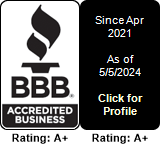Google’s rollout of AI Mode, powered by Gemini 2.5, marks a major transformation in how users interact with search. Unlike traditional blue-link results, AI Mode delivers synthesized answers, contextual suggestions, and task execution without leaving the search interface. For SEO professionals, this shift demands a rethinking of visibility tactics, content formats, and measurement strategies. Below are 15 essential questions and answers addressing how this development impacts the SEO industry and what steps must be taken to adapt effectively.
1. How will AI Mode affect click-through rates from traditional blue link results in SERPs?
AI Mode will likely reduce click-through rates from standard listings because users may get what they need directly from the AI-generated answer. However, content that is featured or cited in those answers can receive highly qualified traffic. SEOs must shift focus to gaining visibility within summaries rather than just chasing traditional ranking positions. The quality of traffic may improve even if volume slightly drops.
2. What content signals will Gemini prioritize when deciding which sites to cite in AI responses?
Gemini is expected to prioritize content that demonstrates topical authority, structured formatting, semantic clarity, and updated relevance. It will likely give weight to authoritativeness, use of proper schema markup, and logical organization of content. Sites that provide clear, evidence-based explanations with traceable sources are better candidates for citation. Language precision and alignment with search intent also play a role.
3. How can SEOs structure pages to increase the chance of being quoted in AI-generated summaries?
Pages should use H2s and H3s to isolate distinct subtopics and include short, standalone answers that directly address specific user intents. FAQ blocks, bullet summaries, and properly marked schema improve machine readability. Including definitions, concise explanations, and source-backed facts helps AI extract and summarize content accurately. Clarity, structure, and consistency increase the chances of being used in AI responses.
4. Does the rise of AI Mode shift SEO focus from keyword rankings to topical authority presence?
Yes, AI Mode reduces the focus on individual keyword rankings and amplifies the importance of being a trusted source across related topics. Search is becoming more about concept coverage and context delivery than matching specific terms. Sites that build strong content clusters and semantic depth around a niche will perform better. Topical relevance is now measured at a broader, interconnected level.
5. How might AI Mode impact traffic distribution between informational and transactional pages?
AI Mode could absorb many top-funnel informational queries, leading to a decrease in traffic to generic blog articles. However, it may drive more qualified visitors directly to mid-funnel or decision-stage pages through deeper, layered suggestions. This means transactional pages that are well-structured and support clear conversions may benefit. The key is connecting informational content to action paths efficiently.
6. Should SEOs create more question-based content to align with conversational AI queries?
Absolutely. AI Mode is optimized for handling natural language questions, so aligning content with user phrasing improves visibility. Including specific questions as subheadings and answering them directly boosts relevance. Long-tail question targeting, especially around comparisons and reasoning, will become more strategic. FAQ sections should be expanded and aligned with user intent based on real search data.
7. How does Google’s query fan-out process change the way keyword clusters should be built?
Query fan-out means a single question spawns multiple sub-queries, so SEOs must ensure content covers semantic variations and subtopics in depth. Content silos must go beyond broad terms and include tightly themed, interlinked pages. Keyword clusters should address primary intent, edge cases, comparisons, and adjacent concerns. This layered coverage supports AI in forming complete answers using your site.
8. Can AI Mode bypass traditional ranking signals like backlinks and instead favor context relevance?
While backlinks still carry weight, AI Mode places greater importance on semantic matching, freshness, and clarity of information. A lesser-known site that provides better-structured and more relevant content may outperform a top-ranked domain. Contextual relevance across an entire topic area could outweigh a few authoritative links. The balance is shifting toward content quality and user alignment.
9. What role will entity-based optimization play in helping content surface in AI-driven search?
Entity optimization is crucial as AI relies on recognizing relationships between people, places, concepts, and actions. Using proper names, disambiguated terms, and supporting entities through internal linking and schema improves visibility. Google’s Knowledge Graph integration means well-defined entities within your content are more likely to be pulled into summaries. Entities provide structure for AI to understand meaning.
10. How can local SEO strategies adapt to AI Mode’s personalized and contextualized responses?
Local SEO must now include personalized data signals like user behavior, proximity, and preferences. Content should emphasize local expertise, include location schema, and reflect user-generated content such as reviews. AI Mode may pull from contextual sources like maps and calendars, so aligning NAP consistency and Google Business Profiles becomes more critical. Tailored content for specific local intents is key.
11. Will the rise of agentic AI reduce the need for direct website visits during user journeys?
Yes, agentic AI may complete tasks such as ticket purchases or reservations without requiring users to visit multiple sites. This will shift SEO focus toward feeding structured, actionable content into systems that make those decisions. Websites need to support machine-readability and clear task-oriented data. Still, high-trust decisions and deep research tasks will continue to drive visits.
12. Should SEOs invest more in real-time data integrations to stay visible in live AI answers?
Yes, especially for industries like events, inventory, weather, or travel, where freshness matters. AI Mode’s live capabilities rely on up-to-date inputs, so APIs, live feeds, and dynamic schema become valuable assets. Sites that support fast indexing and reflect real-time availability will outperform static competitors. Structured data and speed directly influence inclusion in timely AI results.
13. How does AI Mode affect attribution and visibility for publishers in zero-click environments?
AI Mode often summarizes content without requiring a click, which threatens traditional metrics like session count. However, being cited within the AI’s summary can still build authority and visibility. Publishers must optimize for inclusion and also push for visible attribution through proper branding, authorship, and schema. Monitoring AI citations will require new analytics tools beyond Search Console.
14. Are current SEO metrics and tools sufficient to measure AI Mode performance and citations?
No, traditional metrics like impressions and click-through rates do not fully capture AI Mode interactions. New tools are needed to track AI citations, visibility in overviews, and traffic from AI summaries. Analytics platforms must evolve to detect indirect discovery paths and measure engagement beyond clicks. Expect the emergence of AI visibility indices and structured citation tracking.
15. What long-term impact might AI Mode have on content strategy, site structure, and user flow?
AI Mode will push content strategy toward depth, clarity, and modular answers rather than broad overviews. Site structures must be tightly themed with logical internal linking and crawl efficiency. User flow must support fast access to action-oriented data like comparisons, booking details, or definitions. SEOs will need to rethink funnel design in a world where users may never see a homepage.
Action Steps for SEO Teams Moving Forward
– Audit top-performing content for clarity, structure, and machine readability
– Expand topic clusters using internal links and semantically related subtopics
– Apply precise schema markup to support AI summaries such as FAQ and How-To
– Monitor brand mentions and citation visibility within AI Overviews
– Integrate live data sources for sectors like travel, retail, or local events
– Update SEO reporting to include AI-driven impressions and engagement signals
AI Mode is already changing how search works. Teams that act now will build lasting visibility. Those who delay may be excluded from AI responses altogether.
Positioning Your SEO Strategy for the AI Search Era
SEO is no longer about aligning keywords with search intent in a linear fashion. It now requires building structured, credible, and machine-readable content that AI models can interpret and present confidently. Your strategy should prioritize clarity in copy, schema markup implementation, and semantic alignment across content clusters. Shift your workflows toward AI-specific audits, monitor where and how your content appears in AI-generated summaries, and expand entity-based optimization across your site. Focus on direct answers, layered explanations, and modular content blocks that support multi-step reasoning. Maintain technical SEO standards while adapting to a retrieval system that values structured depth over surface-level relevance.
This is not a superficial shift in tactics. It is a fundamental rewrite of how search visibility is earned. Your SEO must now serve both the algorithm and the AI interpreter, or risk being left behind in a system that selects results, not just ranks them.


